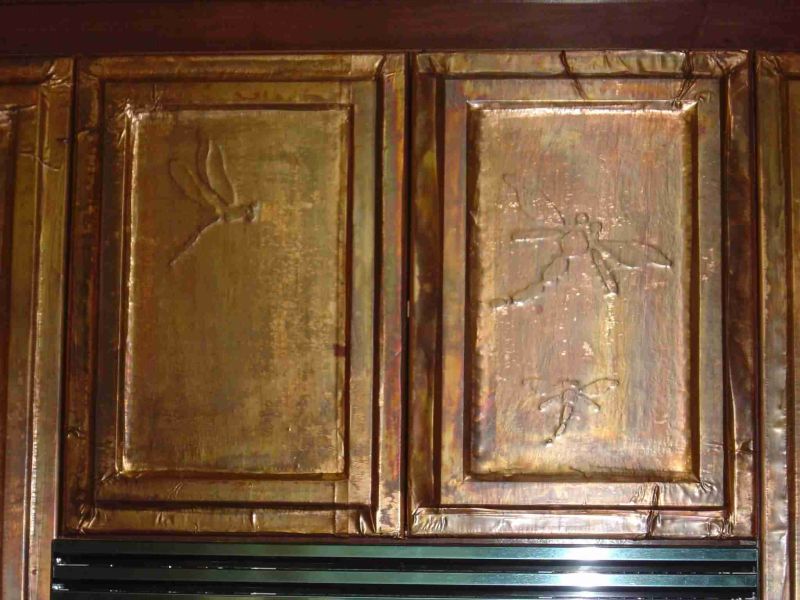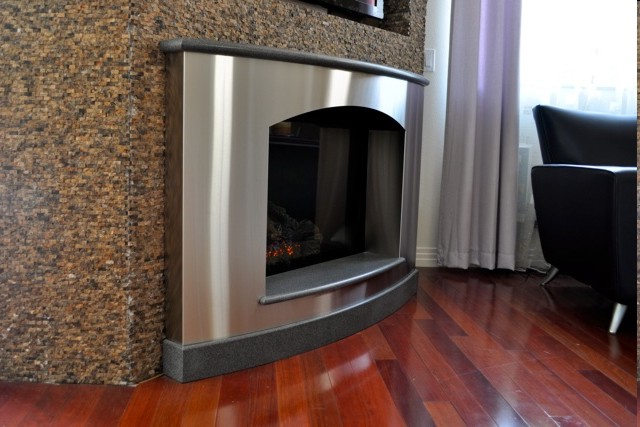Question
Has anyone here made real copper cabinet doors? We've probably all seen the stainless steel encapsulated cabinet doors, and I have been told that the edges are typically welded to get a thick-metal door appearance (welded by a very good welder I assume, as the weld is utterly indistinguishable from the face). I have a job calling for the same thing in copper, some of which are operable as in the case of an 8' wide TV cabinet above a fireplace. The cabinet consists of six doors (two pairs of bi-fold and two fixed) each door approx 42" tall by 16" wide. Door thickness ideally would be 3/4 to 1" so that I can use Euro hinges and Sugatsune bi-fold hardware. For this discussion I'll assume about 3/4 is the target thickness. Also assume that each 42x16 door is only seen on the face and long edges. The tops and bottoms, as well as the back, do not really need to be copper. So in plan section, we have a U-shaped copper wrapped around the face and two long edges of a 16x42 piece of 3/4 MDF.
The architect and client really like a real copper laminate from Chemetal, which comes with a phenolic backer. The Chemetal is about 1/32" thick and has a very nice finish color/appearance and a protective clear finish that prevents oxidation/patina. The goal is that the doors are to appear to be solid copper plates when seen on-edge, so just laminating something like copper Chemetal to the face is not good enough since you would see the edge of the substrate (MDF assumed) when you open the door and it would clearly not be a thick slab of copper. The phenolic backer shows as a black line on edge, and the edge of the freshly cut copper also has a different sheen to it compared to the lacquered face. Laminating the edges in Chemetal and then the face is also not good enough because you still see this line and the cut edge. So I'm thinking mitering it is the only option. Mitering 1/32" thick metal strikes me as a miserable and finicky approach, and the very sharp edge would need to be softened slightly, again exposing the raw copper to the atmosphere and inviting oxidation. It seems to me the copper should be bent around the edge, as with a sheet metal brake. Since contact cement is the preferred method for bonding the laminate to the MDF, I'm worried this would be very tricky since the cement sticks on contact and I really need to slip the MDF into the U of copper.
So my next thought is that I could lay down the copper on an MDF blank that is overwide by 3/4 x 2 = 1.5", then CNC or maybe even 2-pass table saw a 90 degree V out of the back side at 3/4 in from each long edge, just kissing the bottom of the 1/32" thick copper face. Then tape the face of the copper along the miter and bend it to get a perfect edge. A little tricky, particularly with so little MDF left over after the miter cuts, but maybe this is worth trying. Perhaps it would be better to add several extra inches of waste on each edge, so that when I bend it over I have a U-shaped object that is 16" wide on the face and about 2-3" wide on the ends. I would then trim the 2-3" down to 3/4 (flush with the back of the MDF on the table saw, standing the door up on edge. The back is also not important.
As a sheet of this Chemetal costs several hundred bucks, this is a pricey experiment, so I wanted to see if there's a better way or better product that I haven't yet found. I'm open to something other than Chemetal but haven't found other options. Does anyone know of another way to achieve what I'm trying to do?
Forum Responses
(Cabinetmaking Forum)
From contributor F:
I think you will find a mitered or miter-folded edge with a metal laminate will produce a sharp corner that needs to be filed. We tried this on a reception desk a few years ago and had to file the edge so they weren't sharp. It was the real stainless steel laminate from Formica and it was quite time consuming. If they want a real copper door get an architectural metal company to make them, but I think the price would surprise them. You could also look and see if any of the PVC metallics come in copper and if they would accept that. You could also try and bend the long edges by making the miter joint with about a 3/16" open flat space and a piece of solid wood in the joint with a radius. Anything other than solid copper that is bent will have some areas that are not the same and they would need to decide on price versus look and how important that look is to them.

I'm discouraged to hear that bending it tightly won't work and that I might have to round it over. Since this is real copper and quite thick, I thought it would be very pliable and bend to a very tight radius - maybe 1/16" rad or even tighter. There are anodized aluminum options made to look like copper (Formica and others), but it's not nearly as beautiful as the real thing in the opinion of the design team (and I agree). I wouldn't expect anodized aluminum to bend nearly as easily, but I don't have much experience to base this on. I suspect the PVC wouldn't pass either. There is a depth to the real copper that is very nice. There's probably no substitute for experimentation if Chemetal is the look they really want.
